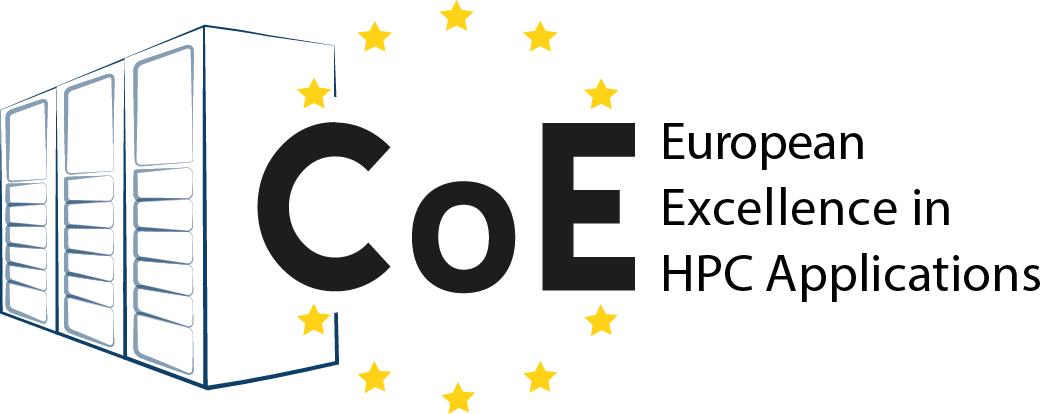- Homepage
- >
- Quantum Chemistry
BigDFT
BigDFT is an electronic structure pseudopotential code that employs Daubechies wavelets as a computational basis, designed for usage on massively parallel architectures. It features high-precision cubic-scaling DFT functionalities enabling treatment of molecular, slab-like as well as extended systems, and efficiently supports hardware accelerators such as GPUs since 2009. Also, it features a linear-scaling algorithm that employs adaptive Support Functions (generalized Wannier orbitals) enabling the treatment of system of many thousand atoms. The code is developed and released as a software suite made of independent, interoperable components, some of which have already been linked and distributed in other DFT codes.
CoE: MaX
Fleur
FLEUR (Full-potential Linearised augmented plane wave in EURope) is a code family for calculating groundstate as well as excited-state properties of solids within the context of density functional theory (DFT). A key difference with respect to the other MAX-codes and indeed most other DFT codes lies in the treatment of all electrons on the same footing. Thereby we can also calculate the core states and investigate effects in which these states change. FLEUR is based on the full-potential linearised augmented plane wave method, a well established scheme often considered to provide the most accurate DFT results and used as a reference for other methods. The FLEUR family consists of several codes and modules: a versatile DFT code for the ground-state properties of multicomponent magnetic one-, two- and three-dimensional solids. A focus of the code is on non-collinear magnetism, determination of exchange parameters, spin-orbit related properties (topological and Chern insulators, Rashba and Dresselhaus effect, magnetic anisotropies, Dzyaloshinskii-Moriya interaction).
CoE: MaX
Yambo
YAMBO is an open-source code released within the GPL licence. It is suitable to calculate and predict the physical properties of materials related to light-matter interaction. It makes use of ab-initio methods, meaning that the calculated properties do not rely on any adjustable parameters but they are obtained by solving the fundamental equation of quantum mechanics. In particular YAMBO implements Many-Body Perturbation Theory (MBPT) methods (such as GW and BSE) and Time-Dependent Density Functional Theory (TDDFT), which allows for accurate prediction of fundamental properties as band gaps of semiconductors, band alignments, defect quasi-particle energies, optics and out-of-equilibrium properties of materials, including nano-structured systems. The code resorts to previously computed electronic structure, usually at the Density Functional Theory (DFT) level and for this reason it is interfaced with two of the most used planewave DFT codes used in scientific community, Quantum ESPRESSO and Abinit.
CoE: MaX
Siesta
SIESTA is a first-principles materials simulation program based on density-functional theory (DFT). It was one of the first codes to enable the treatment of large systems with first-principles electronic-structure methods, which opened up new research avenues in many disciplines. SIESTA has become quite popular and is increasingly being used by researchers in geosciences, biology and engineering (apart from those in its natural habitats of materials physics and chemistry). SIESTA‘s efficiency stems from the use of strictly localized basis sets and from the implementation of linear-scaling algorithms which can be applied to suitable systems. A very important feature of the code is that its accuracy and cost can be tuned in a wide range, from quick exploratory calculations to highly accurate simulations matching the quality of other approaches, such as plane-wave methods.
CoE: MaX
Quantum ESPRESSO
Quantum ESPRESSO (Quantum opEn-Source Package for Research in Electronic Structure, Simulation, and Optimisation) is a suite of open-source codes for quantum materials modelling using the plane-wave pseudopotential method; the suite provides a wide set of common fundamental routines and has been the platform for such important methodological innovations as Car-Parrinello molecular dynamics and Density-Functional Perturbation Theory. It is released under the GNU GPL. It implements density-functional theory (DFT) in the plane-wave pseudopotential approach, but it also includes more advanced levels of theory: DFT+U, hybrid functionals, various functionals for van der Waals forces, many-body perturbation theory, adiabatic-connection fluctuation-dissipation theory.
CoE: MaX
CP2K
CP2K is a quantum chemistry and solid state physics software package that can perform atomistic simulations of solid state, liquid, molecular, periodic, material, crystal, and biological systems. CP2K provides a general framework for different modeling methods such as DFT using the mixed Gaussian and plane waves approaches GPW and GAPW. Supported theory levels include DFTB, LDA, GGA, MP2, RPA, semi-empirical methods (AM1, PM3, PM6, RM1, MNDO), and classical force fields (AMBER, CHARMM). CP2K can do simulations of molecular dynamics, metadynamics, Monte Carlo, Ehrenfest dynamics, vibrational analysis, core level spectroscopy, energy minimization, and transition state optimization using NEB or dimer method. CP2K is written in Fortran 2008 and can be run efficiently in parallel using a combination of multi-threading, MPI, and CUDA. It is therefore easy to give the code a try, and to make modifications as needed.
